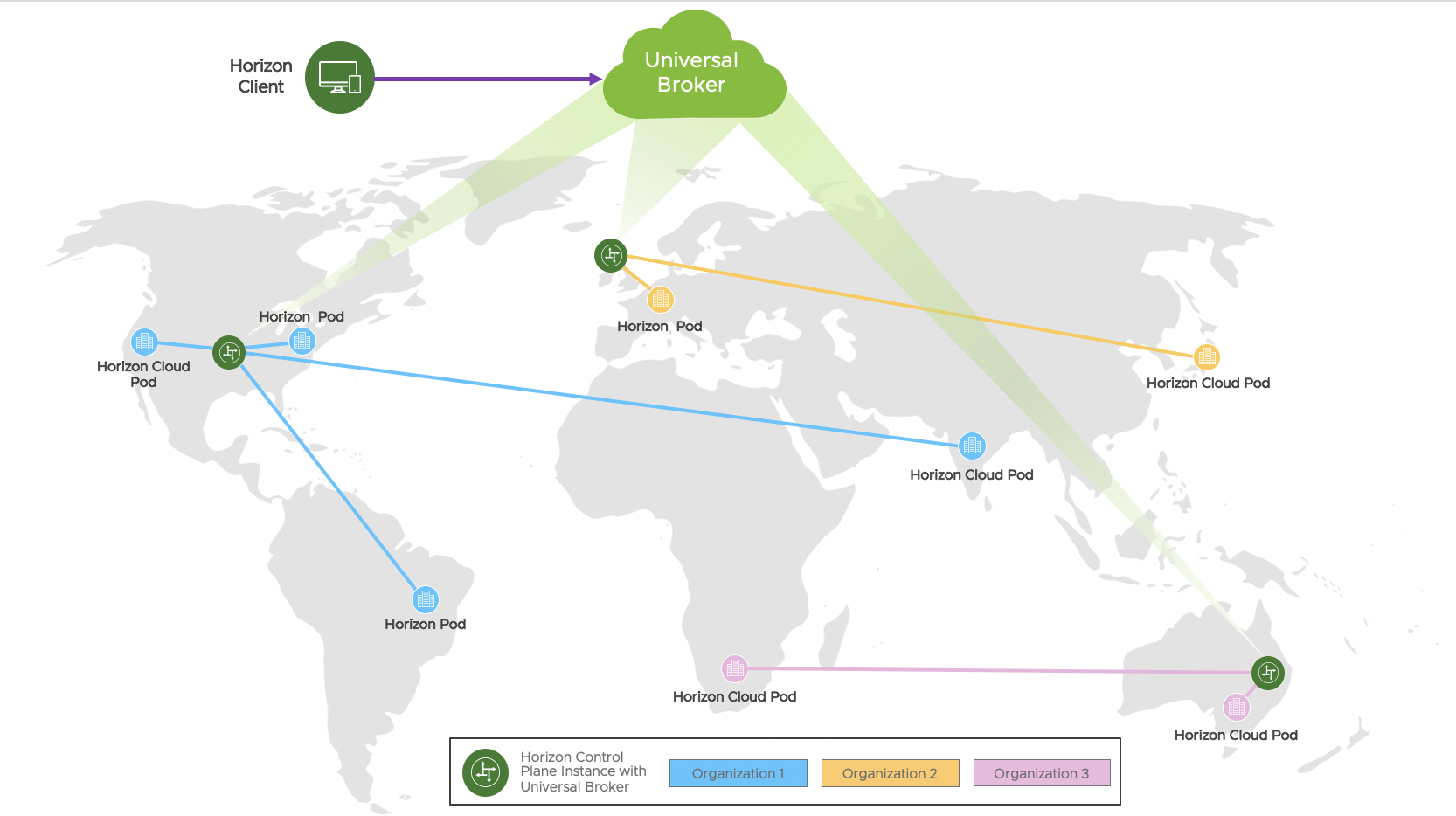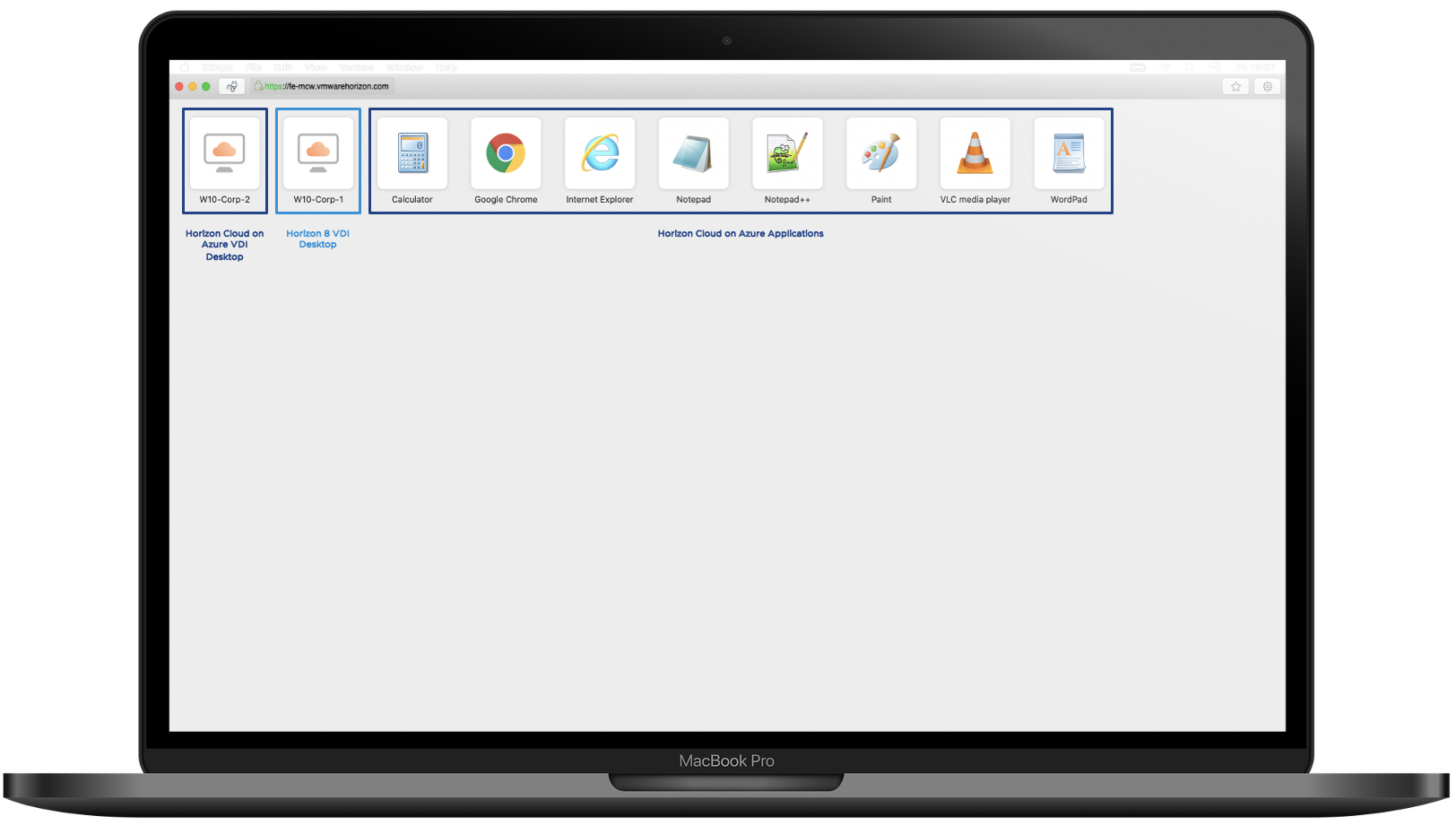

Learn about the Horizon Control Plane – Universal Brokering and Multi-Cloud Assi...
source link: https://blogs.vmware.com/euc/2020/12/horizon-control-plane-universal-brokering-and-multi-cloud-assignments.html
Go to the source link to view the article. You can view the picture content, updated content and better typesetting reading experience. If the link is broken, please click the button below to view the snapshot at that time.
Welcome back to the Horizon Control Plane blog series, where we are talking about each of the five management services that simplify Horizon deployment and management across hybrid and multi-cloud environments. If you missed the first blog post on Image Management, you can read it here. Today, we are focusing on Universal Brokering and Multi-Cloud Assignments.
What is Hybrid and Multi-Cloud?
Before we jump into the challenges that organizations face during a hybrid or multi-cloud VDI deployment and how Universal Brokering and Multi-Cloud Assignments solve the problems, I want to quickly talk about the concept of hybrid cloud and multi-cloud.
A hybrid cloud environment is when private cloud and public cloud platforms work together to provide a flexible mix of cloud computing services, whereas a multi-cloud environment uses more than one public cloud service provider for virtual data storage or computing power resources, with or without any existing private cloud and on-premises infrastructure.
Thus, hybrid cloud differs from multi-cloud in two significant ways:
• Hybrid clouds always include a private cloud.
• Multi-clouds always include more than one public cloud service. Multi-clouds do not have to include a private cloud component, but they can, in which case they can be both multi-cloud and hybrid cloud.
Challenges of Hybrid and Multi-Cloud Deployments
As organizations over the last year had to rapidly embrace a hybrid or multi-cloud virtual desktop and application strategy to meet the sudden need of supporting a remote workforce, they were challenged by the added complexity of a hybrid and multi-cloud architecture, due to the different SLAs, different management tools and different locations of virtual desktops and applications. Furthermore, many of these locations may lack network connectivity directly between them, with no line of sight or limited bandwidth, resulting in both availability and reliability issues.
End-user experience may also be affected, such as users that are unable to access their virtual desktops and applications, dealing with high latency, or experiencing protocol traffic due to hair pinning.
Administrators must also ensure that end users are sent to the correct location to access their virtual desktops and applications. This can become overly complex to manage and, if not done right, can drastically reduce employee productivity and negatively impact business outcomes.
Universal Broker and Multi-Cloud Assignments – Made for Hybrid and Multi-Cloud VDI and App Deployments
Universal Broker and Multi-Cloud Assignments are one of the Horizon Control Plane’s cloud-based management services, supporting both Horizon and Horizon Cloud. With Universal Broker and Multi-Cloud Assignments, admins can easily entitle end-users to virtual desktop and application assignments that span multiple sites. In addition to that, end users can access their virtual desktop and application assignments from a single unified interface, regardless of whether the workloads are on-premises or in the cloud. Let’s take a more in-depth look into each of these services.
Universal Broker is a multi-tenant, cloud-based service that enables unified brokering of virtual desktop and application assignments across hybrid and multi-cloud deployments, supporting both Horizon and Horizon Cloud.

Image 1: Universal Broker is a multi-tenant cloud-based service that provides unified access to virtual desktop and application assignments across hybrid and multi-cloud deployments, supporting both Horizon and Horizon Cloud.
One of the Universal Broker’s fundamental elements is the separation of the end-user authentication traffic from the protocol traffic via the Unified Access Gateways (UAGs), which are placed near the workloads, resulting in the shortest path between endpoints and virtual desktops or applications. This approach eliminates hair pinning, increases performance, elevates the user experience, and eliminates common problems that arise with hybrid or multi-cloud deployments.

Image 2: Universal Broker separates the end-user authentication traffic from the protocol traffic which eliminates hair pinning, increases performance, elevates the user experience, and eliminates common problems that arise with hybrid or multi-cloud deployments.
Benefits of Universal Broker
Now that we’ve gone over the basic approach to Universal Broker, let’s review some of the benefits.
First, end users can access their virtual desktop and application assignments, whether on-premises or in the cloud, using a single URL. This simplifies the overall management and operations by providing end users with a single unified interface, no longer requiring them to remember multiple URLs to access their virtual desktops and applications.
When end users access their virtual desktop and application assignments via that single URL, they will be presented with their entitled assignments all contained within the Horizon Client and Horizon HTML Access, regardless of the workload being on-premises or in the cloud.

Image 3: Endusersare presented their entitled assignment all contained within the Horizon Client and Horizon HTML Access regardless of the workload being on-premises or in the cloud.
Intelligent, smart brokering allows you to configure rules that will automatically route end users to the most appropriate virtual desktop or application assignment based on different criteria, such as the nearest site and homesite. This helps avoid hair pinning of protocol traffic, which may lead to a bad user experience due to the increased latency.
Universal Broker also allows for a simpler network configuration by removing the east-west traffic overhead for Horizon Pods. Pods that use Universal Broker do not require line of sight to each other, removing the need for inter–pod network connectivity.
DNS Global Load Balancers or Global Server Load Balancers (GSLB) are no longer needed to provide a multi-site, highly available horizon deployment. Load Balancers that sit in front of the Pod’s Unified Access Gateways are still required to provide load balancing of the Unified Access Gateways within each pod.
Lastly, Universal Broker supports co-existence with already deployed Horizon Pods. Customers looking to leverage Universal Broker can do so without rebuilding their pods and their existing virtual desktops and RDS Farms. Customers who leverage Cloud Pod Architecture (CPA) can continue to do so without interruption to the pod when using Universal Broker. With co-existence, customers can gradually transition their existing pods to Universal Broker.
Multi-Cloud Assignments
Multi-Cloud Assignments allow for creating and managing a collection of virtual desktops and applications that span across multiple Horizon Pods and sites. The users and groups entitled to the virtual desktop and application assignments use Universal Broker to access their virtual desktop and applications. Multi-cloud Assignments simplify the administration of the virtual desktops and applications when managing pods that span multiple sites, with support for both Horizon and Horizon Cloud. Some of the benefits are:
• A simpler workflow for creating and managing virtual desktops and applications spanning multiple pods and sites, whether on-premises or in the cloud.
• You can quickly scale up or down the virtual desktop and application assignments based on your ongoing needs and requirements.
• Multi-Cloud Assignments can provide disaster recovery and high availability for virtual desktops and applications by spanning them across multiple pods and sites.
• They enable and meet end-user needs by providing roaming desktops and home desktops, irrespective of the end-user location and virtual desktop location.

Image 4: Administrators can create multi-cloud assignments for both Horizon and Horizon Cloud from within the Horizon Cloud Administration Console.
Closing Thoughts
2020 has been a year of disruption, as many of us had to adjust to this “new normal” of working remotely. This disruption brought a renewed interest in virtual desktop infrastructure (VDI) and Desktop as a Service (DaaS), which now has become standard practice. Organizations that previously had only on-premises deployments will no longer be the norm, as they had to quickly embrace the cloud, standing up and deploying brand new environments in the cloud to meet the sudden need of supporting a remote workforce. And as 2020 comes to a close and we look forward to the future, many organizations will continue to have both on-premises and cloud-based deployments. Hence, the Horizon Control Plane, with its cloud-based management services, will play a critical role in ensuring that these organizations are successful as they navigate a hybrid and multi-cloud deployment of virtual desktops and applications.
Read Further:
Learn about the Horizon Control Plane – Image Management
Recommend
About Joyk
Aggregate valuable and interesting links.
Joyk means Joy of geeK